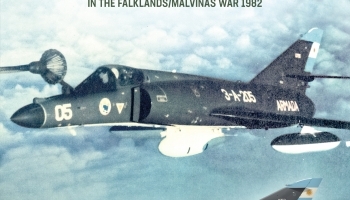
Category: Review
28 Posts


Finland, Germany, Naval, Review
Book Review: Tehtävä Laatokalla

Book Review: AMX – Brazilian-Italian fighter-bomber

Review: Handbrake! – Dassault Super Étendard Fighter-Bombers in the Falklands/Malvinas War 1982

Review: Modern South Korean Air Power

Review: Unmanned Combat Aerial Vehicles

Review: Modern Taiwanese Air Power

Review: Operaatio Punainen kettu

Review: Naval Minewarfare – Politics to Practicalities

